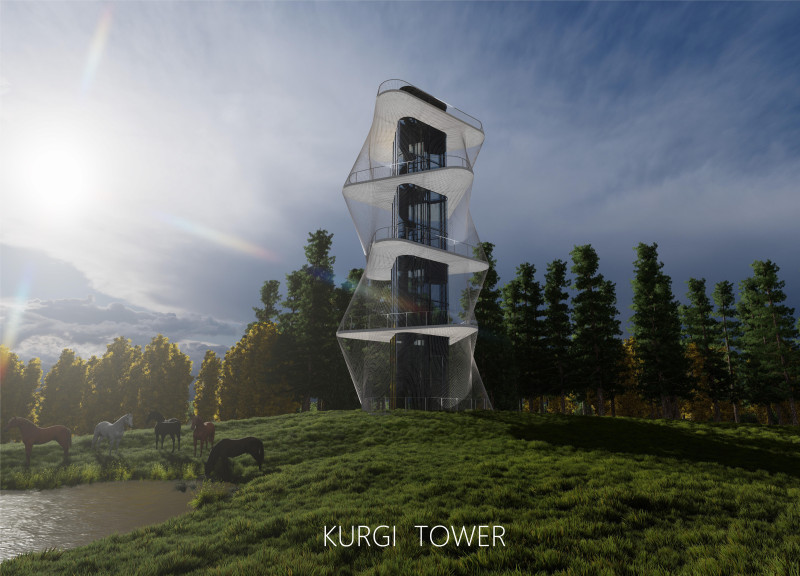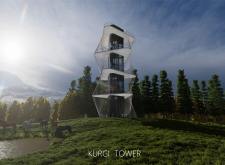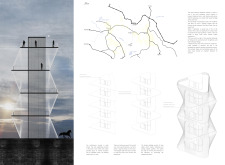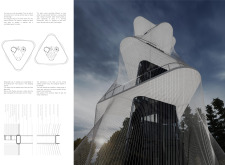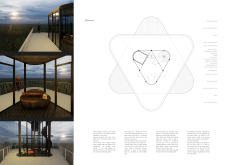5 key facts about this project
Kurgi Tower is located in the North Vidzeme Biosphere Reserve of Latvia, an area known for its vast forests and serene lakes. The tower functions as both a retreat and a viewing platform, integrating naturally with the landscape. The design centers on a core structure that supports multiple levels while encouraging interaction between the indoor spaces and the outdoors.
Architectural Concept
The concept features a central core that provides the main structural support. This core simplifies vertical movement and includes areas designed for relaxation. Balconies surrounding the core create a unique outline, with alternating orientations to give visitors different perspectives of the landscape. This arrangement adds character and engages users with their surroundings.
Materiality and Aesthetics
The façade incorporates steel cables, which keep the balconies light and visually appealing. A stainless steel frame ensures structural strength, while clear glass walls within the core maximize daylight and create unobstructed views of the surrounding area. This combination of materials fosters a strong connection between the interior and the natural environment, allowing for an enriching experience.
Interior Layout and Functionality
The interior is designed with simplicity and comfort in mind. The spaces feature calm shapes that correspond with the building's external appearance. Each floor contains tables and benches for relaxation, while fireplaces add warmth, making the tower usable in various weather conditions. An elevator provides access for up to eight visitors, complemented by a spiral staircase for emergencies, ensuring safety and ease of movement.
Sustainability Features
Kurgi Tower places importance on sustainability, highlighted by solar panels on the roof that contribute to energy independence. The overall design reflects careful material choices and systems that reduce environmental impact.
The triangular slabs create a soft, curved appearance that harmonizes with the landscape, mirroring the natural forms found in the area.


